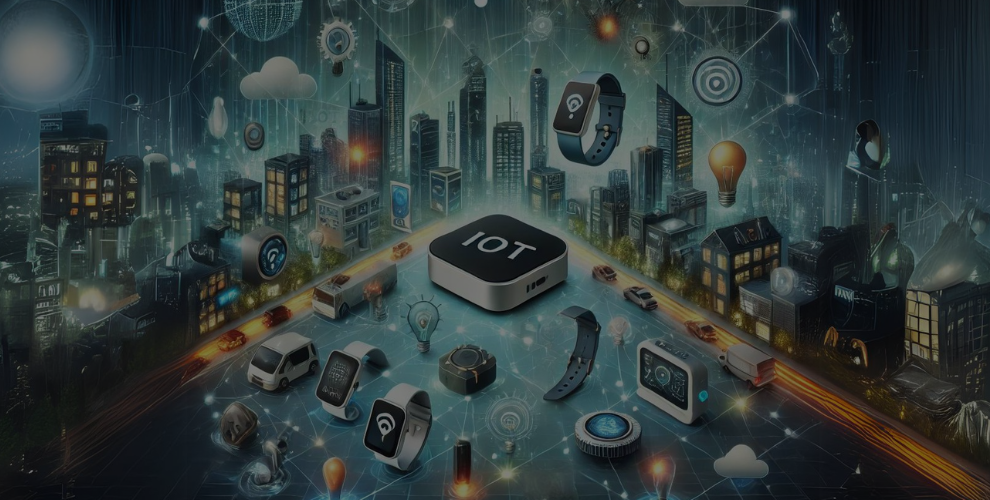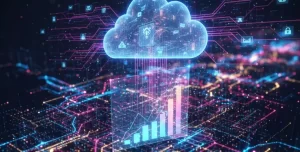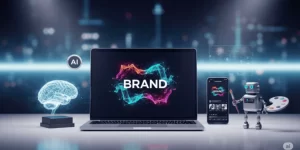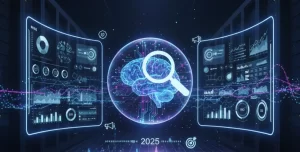
Beyond the Basics: Discover the Hidden Potential of IoT Devices
Table of Contents
Introduction
Welcome to WikiGlitz!
We’ve brought you this insightful blog on discovering the hidden potential of IoT devices.
In today’s rapidly evolving technological landscape, IoT (Internet of Things) devices are becoming more integral to our daily lives and business operations.
While many users are familiar with basic IoT functions, such as home automation or fitness tracking, the true power of these devices often goes unnoticed.
IoT device capabilities have advanced far beyond simple connectivity, offering opportunities to revolutionize industries and enhance our quality of life.
This blog will explore the evolution of IoT devices, reveal advanced IoT device features that might surprise you, and provide insights on how to unlock their full potential.
Whether you’re a tech-savvy consumer or a business leader, this guide will help you leverage IoT technology to its fullest.
Key Takeaways:
- IoT devices have evolved significantly, moving from basic functions to advanced, intelligent systems that can transform industries.
- Unlocking the hidden potential of IoT devices involves understanding advanced features like AI integration, edge computing, and enhanced connectivity.
- Staying updated on the latest IoT trends and future developments is crucial for maximizing the benefits of these powerful technologies.
The Evolution of IoT Devices
The journey of IoT devices from simple connectivity tools to complex, intelligent systems is a fascinating one.
Initially, IoT devices were designed to perform basic tasks like monitoring and remote control.
However, as technology advanced, these devices began to incorporate more sophisticated features, enabling them to process data, learn from patterns, and interact with other systems autonomously.
From Basic Connectivity to Intelligent Systems
In the early days, IoT devices primarily focused on providing remote access and control. For example, smart thermostats allow users to adjust the temperature of their homes from a distance, and fitness trackers can monitor basic health metrics.
While these functions were innovative at the time, they represented just the tip of the iceberg in terms of what IoT devices could achieve.
Today, IoT devices are equipped with advanced IoT device features such as machine learning, artificial intelligence (AI), and edge computing.
These advancements have transformed IoT devices from passive tools into active participants in our daily lives and business operations.
For instance, modern IoT devices can now predict maintenance needs in industrial settings, optimize energy consumption in smart homes, and even provide real-time health insights to medical professionals.
The evolution of IoT devices is not just about adding more features; it’s about creating a more interconnected and intelligent ecosystem. As IoT devices become more integrated with AI and edge computing, they are capable of making real-time decisions, improving efficiency, and delivering personalized experiences.
Advanced IoT Device Features You Might Not Know
The real power of IoT devices lies in their advanced capabilities, which go far beyond basic functions. Understanding these features can help users and businesses unlock the full potential of their IoT investments.
Machine Learning and AI Integration
One of the most significant advancements in IoT technology is the integration of machine learning and AI.
These technologies enable IoT devices to analyze vast amounts of data, recognize patterns, and make decisions without human intervention.
For example, in predictive maintenance, AI-powered IoT devices can monitor equipment in real time, detect anomalies, and predict when a failure might occur.
In smart homes, AI integration allows IoT devices to learn user preferences and behaviors over time, optimizing everything from lighting to energy usage.
For businesses, AI-driven IoT devices can analyze customer data to provide personalized experiences, improving customer satisfaction and loyalty.
Edge Computing in IoT Devices
Edge computing is another game-changer for IoT devices.
Traditionally, IoT devices relied on cloud computing for data processing, which could introduce latency and require significant bandwidth.
Edge computing shifts the processing power closer to the data source—right at the edge of the network. This means IoT devices can process data locally, in real-time, without relying on a distant server.
This is particularly beneficial for applications that require immediate responses, such as autonomous vehicles, industrial automation, and real-time health monitoring.
By reducing latency and bandwidth usage, edge computing enhances the performance of IoT devices and enables more sophisticated applications.
Enhanced Connectivity and 5G
The rollout of 5G networks is set to further revolutionize IoT device capabilities.
5G offers significantly higher speeds, lower latency, and the ability to connect a massive number of devices simultaneously.
This enhanced connectivity opens up new possibilities for IoT devices, especially in areas like smart cities, where thousands of sensors and devices need to communicate with each other in real time.
With 5G, IoT devices can handle more data, support more complex applications, and provide real-time feedback more effectively.
This is crucial for applications like autonomous driving, where split-second decisions can make a difference in safety and performance.
Unlocking the Hidden Potential of IoT Devices
Customization for Specific Needs
To truly unlock the hidden potential of IoT devices, customization is key.
Off-the-shelf IoT devices offer a range of basic functions, but when tailored to specific needs, their effectiveness and efficiency can be significantly enhanced.
For businesses, customizing IoT devices involves configuring them to meet unique operational requirements.
For instance, in manufacturing, IoT devices can be programmed to monitor specific metrics like temperature, vibration, or humidity, which are critical for maintaining product quality.
By setting up these devices to trigger alerts or automated responses based on real-time data, businesses can prevent equipment failure, reduce waste, and optimize production processes.
In consumer applications, customization allows users to create personalized smart home environments.
For example, integrating IoT devices like smart thermostats, lighting systems, and security cameras into a single platform enables seamless automation based on daily routines.
Integration Strategies for Maximum Efficiency
Effective integration is another crucial aspect of maximizing the benefits of IoT devices.
When IoT devices are properly integrated with existing systems, they can work together harmoniously, leading to greater efficiency and better outcomes.
For businesses, IoT device integration strategies may involve connecting IoT devices with enterprise resource planning (ERP) systems, customer relationship management (CRM) software, or other data management platforms.
This integration allows businesses to collect and analyze data from various sources, providing a comprehensive view of operations and customer interactions.
The result is improved decision-making, streamlined processes, and enhanced customer experiences.
In the context of smart cities, integration is vital for creating connected infrastructures.
By integrating IoT devices across transportation, energy, and public safety systems, cities can improve traffic management, reduce energy consumption, and enhance public safety.
For example, smart traffic lights can communicate with connected vehicles and pedestrian sensors to optimize traffic flow and reduce congestion.
Innovative Applications of IoT Devices
While IoT devices are commonly associated with smart homes and industrial automation, their potential applications extend far beyond these areas.
Innovative uses of IoT devices are emerging across various industries, unlocking new possibilities and driving technological advancements.
Sensors placed in fields can monitor soil moisture, nutrient levels, and weather conditions in real time, allowing farmers to make data-driven decisions about irrigation, fertilization, and crop management.
This leads to higher yields, reduced resource usage, and more sustainable farming practices.
In healthcare, IoT devices are transforming patient care through remote monitoring and telemedicine. Wearable devices can continuously monitor vital signs such as heart rate, blood pressure, and glucose levels, sending data directly to healthcare providers.
This enables early detection of health issues, timely interventions, and improved patient outcomes.
The retail industry is also leveraging IoT devices to enhance customer experiences.
Smart shelves equipped with sensors can track inventory levels in real time, automatically triggering restocking orders when supplies run low.
Additionally, IoT-enabled point-of-sale systems can gather data on customer preferences and purchasing behaviors, allowing retailers to personalize marketing efforts and optimize store layouts.
Expert Insights on IoT Device Potential
Industry Opinions on the Future of IoT
The rapid evolution of IoT technology has garnered attention from industry leaders and experts who are closely monitoring its impact across various sectors.
According to a report by Gartner, IoT is poised to become a key driver of digital transformation, with an estimated 25 billion connected devices by 2025.
This growth underscores the need for businesses to understand and leverage the full potential of IoT devices.
Dr. John Barrett, a renowned IoT researcher, highlights that “The integration of AI with IoT is set to redefine how we interact with technology.
IoT devices are no longer just data collectors; they are becoming intelligent systems capable of making decisions and taking actions autonomously.”
This insight emphasizes the importance of businesses investing in advanced IoT solutions that incorporate AI and machine learning.
Credible Sources and Case Studies
To further validate the hidden potential of IoT devices, numerous case studies from credible sources demonstrate the tangible benefits of IoT technology.
A study by McKinsey & Company found that companies that have adopted IoT solutions report significant improvements in operational efficiency, with some achieving up to a 25% increase in productivity.
For instance, Siemens, a global leader in industrial automation, has successfully implemented IoT solutions to optimize its manufacturing processes.
By integrating IoT devices with AI algorithms, Siemens was able to reduce downtime by predicting equipment failures before they occurred, leading to substantial cost savings and increased production efficiency.
Similarly, in the healthcare sector, the Mayo Clinic has utilized IoT devices for remote patient monitoring, resulting in better patient outcomes and reduced hospital readmission rates.
By continuously tracking patient health data, healthcare providers can intervene earlier and tailor treatments to individual needs, demonstrating the life-saving potential of IoT technology.
Future Trends in IoT Device Technology
AIoT: The Combination of IoT and AI
One of the most significant trends shaping the future of IoT is the integration of AI, commonly referred to as AIoT (Artificial Intelligence of Things).
This convergence is enabling IoT devices to process data more intelligently, make decisions autonomously, and even predict future events.
AIoT is expected to revolutionize industries by enabling more efficient and responsive systems.
For example, in logistics, AIoT can optimize supply chain management by predicting demand fluctuations and adjusting inventory levels accordingly.
In smart homes, AIoT devices can learn from user behaviors to create more personalized and intuitive living environments.
The potential of AIoT is vast, and as AI algorithms continue to advance, IoT devices will become even more capable of handling complex tasks, reducing human intervention, and improving overall efficiency.
The Rise of Smart Cities
As urbanization continues to grow, the concept of smart cities is becoming increasingly important.
IoT devices are at the heart of smart city development, providing the infrastructure needed to manage resources efficiently, improve public safety, and enhance the quality of life for residents.
In smart cities, IoT devices are used to monitor and manage everything from traffic flow to energy consumption.
For example, smart grids can adjust energy distribution based on real-time demand, reducing waste and lowering costs.
Similarly, IoT-enabled public safety systems can detect and respond to incidents more quickly, improving emergency response times.
The rise of smart cities represents a significant opportunity for businesses and governments to collaborate on innovative solutions that address the challenges of urbanization.
As IoT technology continues to evolve, the potential for smart cities to improve urban living will only increase.
The Expanding Scope of IoT in Consumer Products
The consumer market for IoT devices is expanding rapidly, with new products and applications emerging regularly.
From wearable devices that track fitness metrics to smart appliances that simplify daily tasks, IoT is becoming an integral part of everyday life.
Looking ahead, the scope of IoT in consumer products is expected to grow even further.
Emerging trends include the development of IoT-enabled health and wellness devices, smart home security systems, and connected vehicles.
These products are not only making life more convenient but are also providing consumers with greater control over their environments.
As consumers become more accustomed to the benefits of IoT technology, demand for these devices will continue to rise.
This presents a significant opportunity for businesses to innovate and deliver new, value-added products that meet the evolving needs of consumers.
Conclusion
In conclusion, the hidden potential of IoT devices extends far beyond their basic functionalities.
As technology evolves, these devices are becoming smarter, more customizable, and increasingly integrated into every aspect of our lives.
By leveraging advanced IoT device features like AI integration, edge computing, and enhanced connectivity through 5G, businesses and consumers alike can unlock new levels of efficiency, innovation, and personalization.
Understanding and utilizing the full capabilities of IoT devices is essential for staying competitive in today’s rapidly changing technological landscape.
Whether through strategic customization, effective integration, or exploring innovative applications, the opportunities that IoT devices offer are vast and transformative.
Thank you for exploring these insights with us here at WikiGlitz. We’re dedicated to keeping you informed on the latest advancements in technology.
Follow WikiGlitz for more such insights, and stay ahead in the ever-evolving world of IoT and beyond!
FAQs
What are some advanced features of IoT devices that are often overlooked?
Many IoT devices now include advanced features like AI integration, edge computing, and real-time data processing, which allow for autonomous decision-making, reduced latency, and improved efficiency.
How can businesses unlock the full potential of their IoT devices?
Businesses can unlock the full potential of their IoT devices by customizing them to meet specific operational needs, integrating them with existing systems for maximum efficiency, and exploring innovative applications that go beyond basic functions.
What are the latest trends in IoT technology that businesses should be aware of?
Key trends include the integration of AI with IoT (AIoT), the rise of smart cities, and the expansion of 5G connectivity. These advancements are enhancing the capabilities of IoT devices and opening up new opportunities for innovation.
How does 5G connectivity impact the performance of IoT devices?
5G connectivity offers higher speeds, lower latency, and the ability to connect a large number of devices simultaneously, significantly improving the performance and real-time capabilities of IoT devices, especially in applications like smart cities and autonomous vehicles.
What role will IoT devices play in the development of smart cities?
IoT devices are central to the development of smart cities, providing the infrastructure for efficient resource management, improved public safety, and enhanced quality of life through connected systems like smart grids, intelligent transportation, and environmental monitoring.
Want to keep up with our blog?
Our most valuable tips right inside your inbox, once per month.
Error: Contact form not found.
WikiGlitz Team
Welcome to WikiGlitz, your ultimate destination for tech insights and innovation. Our expert team is dedicated to delivering free resources and professional advice on various technology topics, including Artificial Intelligence, Cyber Security, Cloud Computing, and more. We strive to empower our readers with up-to-date information and practical guidance, ensuring you stay ahead in the rapidly evolving tech landscape. At WikiGlitz, we are passionate about making complex technology accessible to everyone. Our team of seasoned experts curates content that is both informative and engaging, helping you understand and leverage the latest tech trends. Whether you're a tech enthusiast or a professional, WikiGlitz is your go-to source for reliable, expert-driven content. Join us on this journey to explore and embrace the future of technology.





